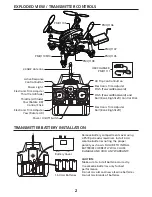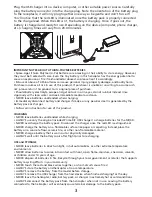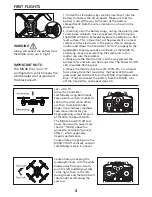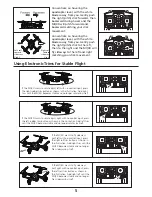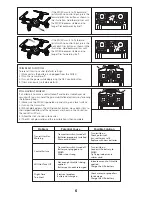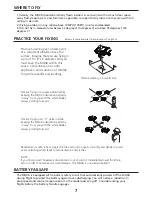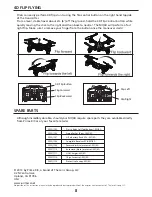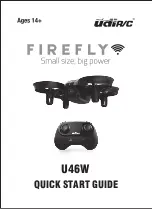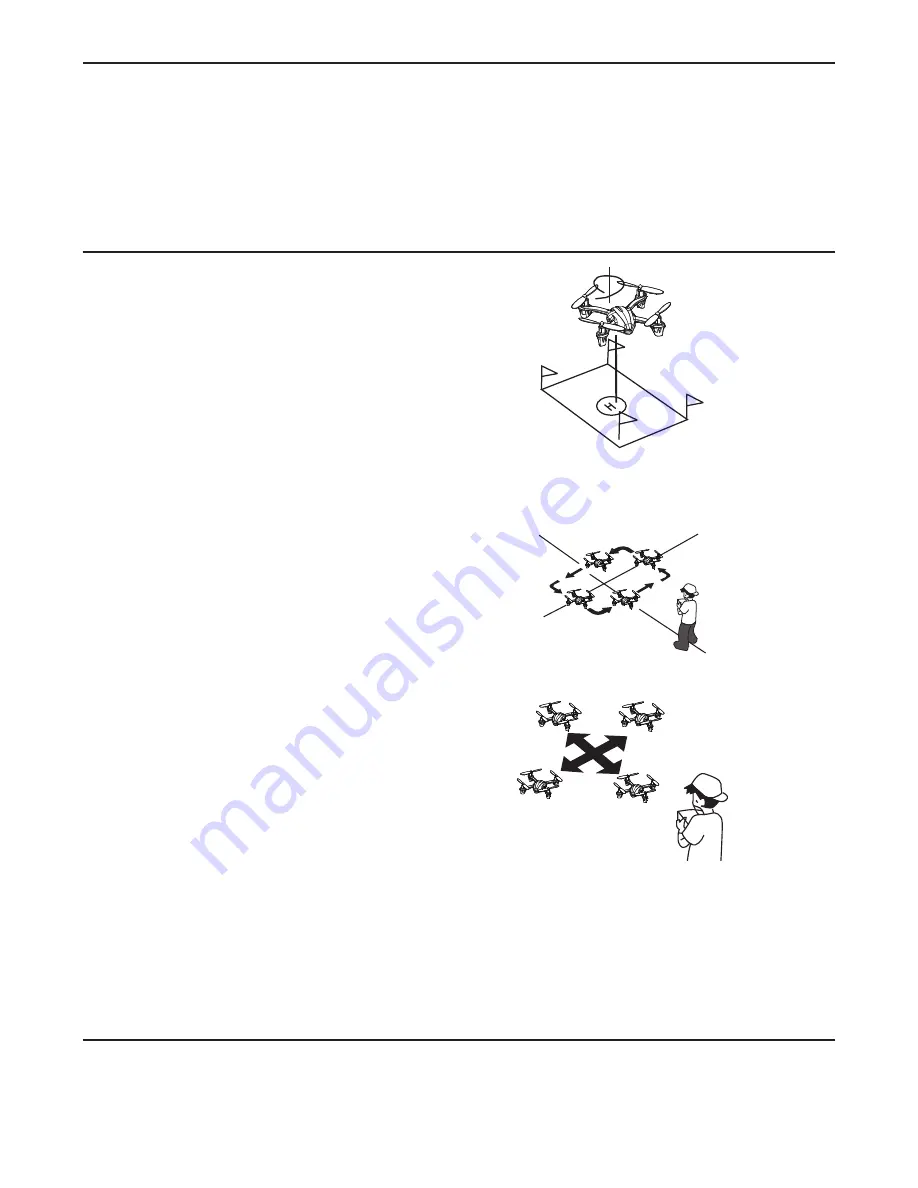
WHERE TO FLY
PRACTICE YOUR FLYING
Below are some exercises to improve your flying skills
1.) Ideally, the MQ4D should be initially flown indoors in zero wind with as much clear space
away from people, pets, and furniture as possible. An open family room or other area with tall
ceilings is desired.
2.) Flying outdoors in any winds above 10MPH (17KPH) is not recommended.
3.) Do not fly in temperatures below 32 degrees F (0 degrees C) or above 95 degrees F (35
degrees C)
Practice hovering over a fixed point,
at a consistent altitude above the
surface. Imagine that you are flying in
a silo of 1m (3’) in diameter and you
must keep the MQ4D within this
space. Concentrate on smooth
application and reduction of throttle
for gentle takeoffs and landings.
Practice flying in a square pattern while
keeping the MQ4D orientation perfectly
“away” from you with the white blades
always pointing forward.
Practice flying in an “X” pattern while
keeping the MQ4D orientation perfectly
“away” from you with the white blades
always pointing forward.
Remember, smooth is best. Apply throttle and control inputs smoothly and gently to avoid
over-controlling which leads to disorientation and crashes.
NOTE:
If you find yourself hopelessly disoriented or out of control, immediately lower throttle to
zero in order to minimize any crash damage. The MQ4D is unusually durable!!!
Practice landing in a small circle.
IMPORTANT NOTES ABOUT LITHIUM-POLYMER BATTERIES
• Space-Age Lithium Polymer (Li-Po) batteries are amazing in their ability to store energy. However,
they must be treated with care. Even the tiny battery in this helicopter has the energy potential to
cause an explosion or fire if mishandled or abused, so please treat it accordingly.
• Misuse or abuse of LiPo batteries can cause personal injury, property damage, and bodily harm.
Purchaser assumes all risk in use of this product. If purchaser is unable or unwilling to assume such
risk, please return this product to its original place of purchase.
• Should battery electrolyte escape and get onto skin or in eyes, do not rub but instead rinse
vigorously with clean water and seek immediate medical assistance.
• NEVER leave batteries unattended when charging.
• Immediately disconnect battery and charger if smoke or any peculiar smell is generated by the
battery pack or charger.
• Follow all instructions for use of this product.
CHARGING
• NEVER leave batteries unattended while charging
• ALWAYS use only the original included Prime R/C USB charger to charge batteries for the MQ4D.
• NEVER overcharge the battery pack. Disconnect the charger once the red LED is extinguished.
• NEVER charge the battery on a flammable surface like paper or carpeting. Instead, place the
battery on a concrete floor, ceramic tile, or other non-flammable material.
• NEVER charge a battery that is worn out or physically damaged.
• ALWAYS wait until the battery cools after flight prior to recharging.
USE and STORAGE
• NEVER leave batteries in direct sunlight, in hot automobiles, or other extreme temperature
environments.
• NEVER allow batteries to come into contact with heat, open flame, moisture, chemicals, solvents,
or children under 14 years of age.
• NEVER dispose of batteries in fire. Recycle through your local government or retailer that supports
battery recycling efforts in your community.
• NEVER touch the red and black wires together, as short-circuits cause fires!
• ALWAYS store the battery and helicopter at room temperature.
• ALWAYS remove the battery from the model before storage.
• ALWAYS remove the USB charger from the host device when finished charging for the day.
• NEVER leave the helicopter, radio, battery pack, or charger in extremely hot or cold conditions.
• ALWAYS disconnect the battery pack from the helicopter when not in use. Leaving the battery
connected to the helicopter will eventually cause terminal damage to the battery pack.
7
BATTERY FAILSAFE
The MQ4D is equipped with a battery safety circuit that automatically powers off the MQ4D
during flight to protect the battery against over-discharging. You will notice a reduction in
prop speed and control response prior to the model powering off. Consider ending your
flights before the battery failsafe engages.


